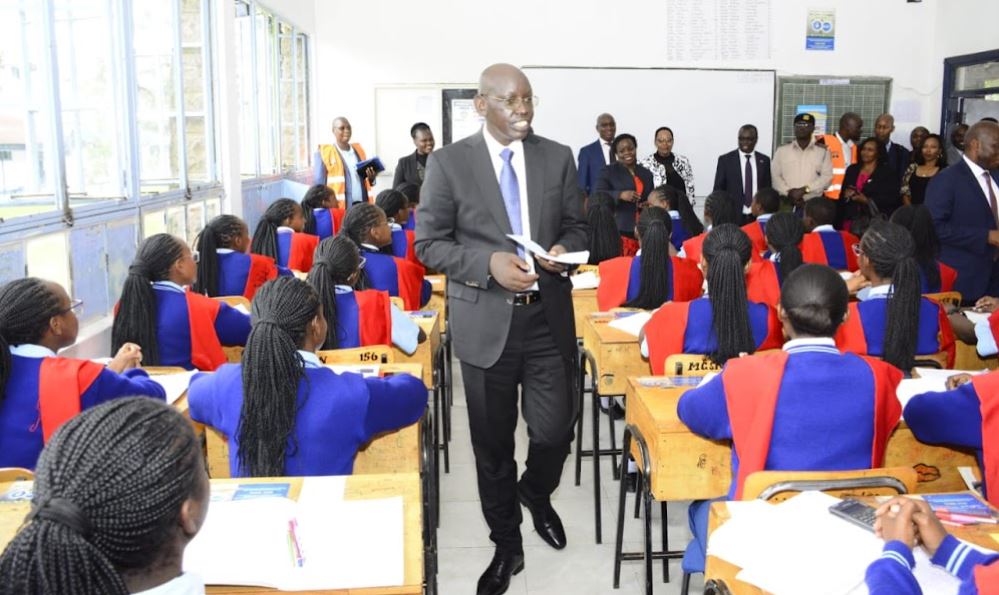 Starting Monday, over 1.2 million Grade 9 learners across Kenya who form the pioneer class under the Competency-Based Curriculum (CBC) began choosing their preferred career pathways as they prepare for the next academic milestone: Grade 10 in 2026.
Starting Monday, over 1.2 million Grade 9 learners across Kenya who form the pioneer class under the Competency-Based Curriculum (CBC) began choosing their preferred career pathways as they prepare for the next academic milestone: Grade 10 in 2026.
This crucial step marks a turning point in Kenya’s education reform journey, as students transition from junior to senior school through a process designed to align their academic strengths, personal interests, and future ambitions.
Career Pathway Options for Senior School Learners
Senior schools will offer three distinct career pathways tailored to learners’ talents and long-term goals:
- Science, Technology, Engineering and Mathematics (STEM)
- Social Sciences
- Arts and Sports Science
Despite the specialization, some subjects remain mandatory for all students. These include Mathematics, English, Kiswahili, and Community Service Learning, core areas designed to promote critical thinking, communication, and civic responsibility.
New Digital System to Guide Career Pathway Selections
To support the transition to senior school, the Ministry of Education has introduced a centralized, automated system for learners to select their pathways, subject combinations, and preferred schools.
“Furthermore, the public senior schools are required to upload the subject combinations that they will be offering in 2026 on the system for the Grade 9 learners to select,” said Education Principal Secretary Julius Bitok.
Bitok also directed junior schools to guide their students through this selection process using the official portal selection.education.go.ke.
Detailed Guidelines Rolled Out to Support the Transition
In a circular sent to regional, county, and sub-county education directors, the PS provided a detailed roadmap for implementing the new system.
At the senior school level, principals must log into the platform using their institution’s Unique Identification Code (UIC). They are required to declare their student intake capacity for Grade 10 and upload at least two career pathways with corresponding subject combinations.
Notably, offering STEM is mandatory, and each subject combination must accommodate at least 15 students.
Sub-County Directors of Education will then review these selections. If a proposed combination is rejected, the school can revise and resubmit their choices.
Junior Schools to Guide Learners Through the Process
Headteachers of junior schools play a critical role in helping learners complete the selection process. After logging in with the school’s UIC credentials, headteachers must update each student’s profile, assign a preferred pathway, and select three subject combinations for each learner.
For every combination, learners must choose four senior schools, one from each of four different clusters, making a total of 12 school selections. However, learners with special needs have more flexible options and may choose fewer schools that are tailored to support their disabilities, including special needs or integrated institutions.
“All field officers are expected to support this selection process, which will run from June 9 to June 30, 2025,” Prof. Bitok emphasized.
Senior School Curriculum and Placement Criteria
Once students transition to senior school, they will take a total of seven subjects. In addition to their pathway-specific courses, all learners will study the four core subjects to ensure they gain competencies aligned with both national development and global competitiveness.
Placement into senior school will be based on multiple factors, including a learner’s chosen pathway, academic performance, and personal interests. The Ministry will use cumulative assessments from Grades 6 through 9 – both formative and summative – to inform placement decisions. The final Grade 9 assessment in November will carry significant weight.
Twelve School Selections Based on Pathways and Residence
Each student must select 12 senior schools based on their pathway choices – four schools per pathway. Out of the 12, at least nine must offer boarding facilities. Three of those nine must be within the learner’s home county, while the rest can be located in other regions of the country.
Senior schools will be categorized based on the number of pathways they offer.
- Triple Pathway Schools will provide all three options – STEM, Social Sciences, and Arts & Sports.
- Dual Pathway Schools will offer STEM alongside either Social Sciences or Arts & Sports.
This new structure under the Competency-Based Curriculum (CBC) aims to empower learners to pursue education paths aligned with their strengths and aspirations, while also preparing them for the dynamic demands of the modern world.